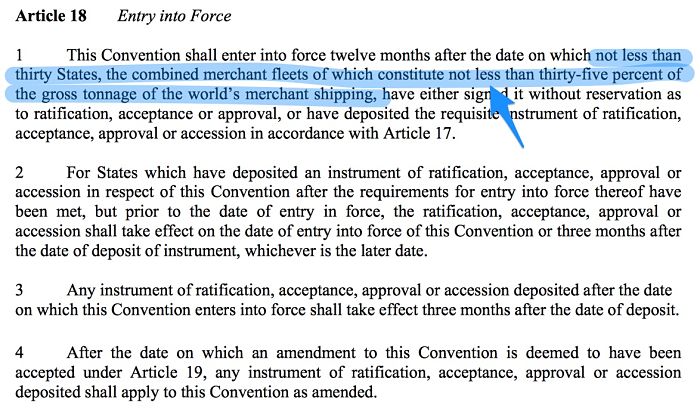Treaty and convention are two words that looks to have same meaning.
Too often I hear the question about difference between these two terms . And each time I read or hear an answer to this question, it becomes even more confusing.
Do you feel the same way about these terms ? So lets simplify these terms once for all.
What is a treaty ?
We will come to the difference part. But first let us understand what exactly a treaty is. And what more better way to understand this than with a story.
The story is about “peace process”.
Let us say there are 2 friends. Off late, they fight a lot with each other. But now they want to have a peaceful environment. So they made a set of rules for each one to follow. Both of them signed these rules and agreed to follow this in the future.
You know what ? They have just signed a treaty.
Since this treaty is about having peace and harmony, it may be called “Peace treaty” between two friends. And since it involves two parties, it will be called “Bilateral treaty”.
Now you can co-relate this to the real treaties.
For example, Indus water treaty is a bi-party treaty between India and Pakistan for distribution of water from rivers flowing from India to Pakistan.
Same way, Cuban-American treaty is the bi-party treaty between Cuba and United states of America for the betterment of relations between these two countries.
When does a treaty come in force ?
Usually a treaty will enter into force when all the parties have signed the treaty. A Bilateral treaty will enter in force when both the parties have agreed to the conditions set in he treaty.
What is a Convention ?
Now that we know about treaties, let us move to what a convention is.
Let us take a similar story in different situation. There are 10 friends who nowadays are fighting with each other. Because of this the peaceful environment of the town is in question.
The head of the town drafts a policy for conduct of people in the town. This policy will be a convention. Let’s call it “Peace convention”.
A Convention has Articles, annexes and regulations.
In our story, before this convention is brought up, head of the town (in discussion with the head of families) may decide upon various rules about how to go about in bringing this convention. Rules such as
- How many families need to accept the convention for it to come in force ?
- Who among the family members can give their vote
- How a family can cast its vote. That is by verbal, written, typed. And by which method, That is by email, fax, hand delivered etc
These set of rules forms “Articles of the convention”.
The details of the convention is drawn up into annexes and each annex will have many regulations.
How a convention enters into force ?
As I said, a convention has articles and Annexes. It can have different structure but at least the IMO conventions are structured this way.
One of the Article of the convention will have the details of how the convention will come in force.
For example, Article 18 of the Ballast water convention states that for this convention to enter into force, At least 30 states with combined gross tonnage of 35 percentage need to ratify the convention.
Difference between Treaty and Convention
Now you see, both of these examples are for a peace process. One is “peace treaty” and second one is “peace convention”.
As you might have already noted, there are few differences. That is exactly what differentiates a treaty and a convention. Let us discuss the differences.
Number of Parties involved
The treaty is between a limited number of parties. Mostly two (Bi-party treaty), sometime three (tri-party treaty) and rarely more than that.
But convention is usually for larger number of parties. For example SOLAS convention has been ratified and adopted by 172 countries.
Drafted and executed by
A treaty is drafted and signed by the parties involved. For example if two countries are at war, they may sign a “peace treaty” to end the war. This treaty may cover the rule of conduct of each nation to avoid such wars in the future.
In this treaty only two countries are involved and no one else. The process may proceed under some international body but it is the parties involved that decides and agree on the structure of the treaty.
But the convention is drafted and executed under an international body such as United Nations for the issues that affects multiple countries (or parties) .
Extent of coverage
Treaty is drafted, agreed and signed to solve a local issue. For example,
- A issue of tensed environment between two countries
- Issue of flow of river water between two countries
whereas a convention is drafted, agreed and signed to solve a issue that affects larger section of the world.
So much in common
Having said all that, you would have noticed that there are so many similarities between a treaty and a convention.
For example, look at the two stories of friends, one of which led to a treaty and other to a convention.
At the end, both are a kind of “peace process agreements”.
This is the reason that the word “treaty” and “convention” are many times used interchangeably.
Treaties and conventions in Maritime context
Shipping and maritime industry is international in nature. All the rules and regulations in maritime context affects almost all countries.
Rules and regulations for the international shipping are governed by IMO which is a body of united nations.
As we can understand by now that all the rules drafted by IMO would fall under the category of “Convention” and not “treaty”.
So we can say that IMO drafts conventions for the world shipping to adopt and follow.
Few of these conventions that we all know are
- SOLAS convention (For safety of life at sea)
- MARPOL convention (For pollution prevention at sea)
- CLC convention (For civil liability during oil pollutions)
- FUND convention (Supplementary fund for oil pollution incidents)
- SUA convention (Suppression of unlawful acts)
- Load line convention (For ship’s load line)
All these conventions were drafted, approved and were brought in force to solve a larger issue that affects the world’s shipping.
Conclusion
Treaty and convention are confusing. In maritime context, we have conventions as these are executed by an international body and these aims for the world shipping at large.
Though all these conventions are sometimes referred as “International treaties” but so far we know what each one of these mean, it is OK to use these interchangeably.
Share this:

About Capt Rajeev Jassal
Capt. Rajeev Jassal has sailed for over 24 years mainly on crude oil, product and chemical tankers. He holds MBA in shipping & Logistics degree from London. He has done extensive research on quantitatively measuring Safety culture onboard and safety climate ashore which he believes is the most important element for safer shipping.
Search Blog
24 Comments


Dear Sir,Thanks a lots for giving excellent knowledge.

Thank you Raman..

excellent sir for every topic there are very good examples which clears our doubt easily keep posting topics with these nice examples Appreciate your hard work for letting us to know these useful information

Thanks Adnan..

sir please do explain clc ,fund ,sua, and fal convention

I have already written on CLC convention and Fund Convention. I will write on SUA and FAL Convention.

Sir Perfectly explained it helps much more than expected

Thanks, Mandeep...

Good understanding...

Thanks, Aakash...

Excellent explaination sir...easy to understand and remember...

Glad you found it useful Pravin...

Sir i need to understand Hague Visby and Hamburg rules in better way....request your assistance...Thanks in advance.

I have written a blog on Hague-Visby rules...If you have any specific question on this, do not hesitate to ask.

well explained once again sir. Sir could you give some examples of treaties with regard to shipping, signed between different countries

Sir please write an article about SUA convention.

wooh what an interesting presentation

excellent way of presenting the matters with easly undersatnable examples, really appreciate you.

Thanks alot sir...

Really well explained n to the point. Kindly captain I am a graduate in shipping and maritime. How can I proceed for masters online or distance e learning. Kindly assist??

Thanks for your good clarification regarding treaty and convention among countries. If you don't mind,you can share your articles through my email,I will be happy.

great explanation thank you
Leave Comment
More things to do on myseatime

MySeaTime Blogs
Learn the difficult concepts of sailing described in a easy and story-telling way. These detailed and well researched articles provides value reading for all ranks.

Seafarers Question Answers
Ask or answer a question on this forum. Knowledge dies if it remains in our head. Share your knowledge by writing answers to the question

MySeaTime Podcast
This podcast on the maritime matters will provide value to the listeners. Short, crisp and full of value. Stay tuned for this section.



Excellent article captain sahab !
Glad you liked it Nitin..